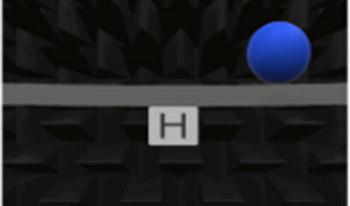References
1AhrensA.LundK. D.MarschallM.DauT.2019Sound source localization with varying amount of visual information in virtual realityPLoS One141191–1910.1371/journal.pone.0214603
2AlaisD.BurrD.
3BaileyH. D.MullaneyA. B.GibneyK. D.KwakyeL. D.2018Audiovisual integration varies with target and environment richness in immersive virtual realityMultisens. Res.31689713689–71310.1163/22134808-20181301
4BertelsonP.VroomenJ.GelderB. D.DriverJ.2000The ventriloquist effect does not depend on the direction of deliberate visual attentionPercept. Psychophys.62321332321–3210.3758/BF03205552
5BonathB.NoesseltT.MartinezA.MishraJ.SchwieckerK.HeinzeH.-J.HillyardS. A.2007Neural basis of the ventriloquist illusionCurr. Biol.17169717031697–70310.1016/j.cub.2007.08.050
6BosenA. K.FlemingJ. T.BrownS. E.AllenP. D.O’NeillW. E.PaigeG. D.2016Comparison of congruence judgment and auditory localization tasks for assessing the spatial limits of visual captureBiol. Cybern.110455471455–7110.1007/s00422-016-0706-6
7BrunsP.2019The ventriloquist illusion as a tool to study multisensory processing: An updateFrontiers Integrative Neurosci.1310.3758/s13414-014-0699-y
8BrunsP.MaiwormM.RöderB.2014Reward expectation influences audiovisual spatial integrationAttention, Perception, Psychophys.76181518271815–2710.3389/fnint.2019.00051
9CharbonneauG.VeronneauM.Boudrias-FournierC.LeporeF.CollignonO.2013The ventriloquist in periphery: Impact of eccentricity-related reliability on audio-visual localizationJ. Vis.131141–1410.1167/13.12.20
10ChenY. C.SpenceC.
11ChuenL.SchutzM.2016The unity assumption facilitates cross-modal binding of musical, non-speech stimuli: The role of spectral and amplitude envelope cuesAttention, Perception, Psychophys.78151215281512–2810.3758/s13414-016-1088-5
12
13DiederichA.ColoniusH.2004Bimodal and trimodal multisensory enhancement: Effects of stimulus onset and intensity on reaction timePercept. Psychophys.66138814041388–40410.3758/BF03195006
14DonohueS. E.WoldorffM. G.MitroffS. R.2010Video game players show more precise multisensory temporal processing abilitiesAttention, Perception, Psychophys.72112011291120–910.3758/APP.72.4.1120
15ElliottD. B.2016The good (logMAR), the bad (Snellen) and the ugly (BCVA, number of letters read) of visual acuity measurementOphthalmic Physiol. Opt.36355358355–810.1111/opo.12310
16FreemanL. C. A.WoodK. C.BizleyJ. K.2018Multisensory stimuli improve relative localisation judgments compared to unisensory auditory or visual stimuliJ. Acoust. Soc. Am.143610.1121/1.5035874
17GodfroyM.RoumesC.DauchyP.2003Spatial variations of visual – auditory fusion areasPerception32123312451233–4510.1068/p3344
18HairstonW. D.WallaceM. T.VaughanJ. W.SteinB. E.NorrisJ. L.SchirilloJ. A.2003Visual localization ability influences cross-modal biasJ. Cogn. Neurosci.15202920–910.1162/089892903321107792
19HowardI. P.TempletonW. B.Human Spatial Orientation1966WileyNew York
20JackC. E.ThurlowW. R.
21JacksonC. V.1953Visual factors in auditory localizationQ. J. Exp. Psychol.5526552–6510.1080/17470215308416626
22KoppenC.AlsiusA.SpenceC.2008Semantic congruency and the colavita visual dominance effectExp. Brain Res.184533546533–4610.1007/s00221-007-1120-z
23KramerA.RöderB.BrunsP.2020Feedback modulates audio-visual spatial recalibrationFront. Integr. Neurosci.131151–1510.3389/fnint.2019.00074
24LaurientiP. J.KraftR. A.MaldjianJ. A.BurdetteJ. H.WallaceM. T.2004Semantic congruence is a critical factor in multisensory behavioral performanceExp. Brain Res.158405414405–1410.1007/s00221-004-1913-2
25LewaldJ.GuskiR.2003Cross-modal perceptual integration of spatially and temporally disparate auditory and visual stimuliCogn. Brain Res.16468478468–7810.1016/S0926-6410(03)00074-0
26MillerJ.1982Divided attention: Evidence for coactivation with redundant signalsCogn. Psychol.14247279247–7910.1016/0010-0285(82)90010-X
27MoreyR. D.RouderJ. N.
28NoelJ. P.ModiK.WallaceM. T.Van der StoepN.2018Audiovisual integration in depth: multisensory binding and gain as a function of distanceExp. Brain Res.236193919511939–5110.1007/s00221-018-5274-7
29OdegaardB.WoznyD. R.ShamsL.2015Biases in visual, auditory, and audiovisual perception of spacePLoS Comput. Biol.111231–2310.1371/journal.pcbi.1004649
30PariseC. V.SpenceC.ErnstM. O.2012When correlation implies causation in multisensory integrationCurr. Biol.22464946–910.1016/j.cub.2011.11.039
31PomperU.ChaitM.2017The impact of visual gaze direction on auditory object trackingSci. Rep.71161–1610.1038/s41598-017-04475-1
32RadeauM.BertelsonP.1977Adaptation to auditory-visual discordance and ventriloquism in semirealistic situationsPercept. Psychophys.22137146137–4610.3758/BF03198746
33SchrögerE.WidmannA.1998Speeded responses to audiovisual signal changes result from bimodal integrationPsychophysiology35755759755–910.1111/1469-8986.3560755
34SteinB. E.MeredithM. A.HuneycuttW. S.McDadeL.
35TalsmaD.SenkowskiD.Soto-FaracoS.WoldorffM. G.2010The multifaceted interplay between attention and multisensory integrationTrends Cogn. Sci.14400410400–1010.1016/j.tics.2010.06.008
36TaylorK. I.MossH. E.StamatakisE. A.TylerL. K.2006Binding crossmodal object features in perirhinal cortexProc. Natl. Acad. Sci. USA103823982448239–4410.1073/pnas.0509704103
37ThomasJ. P.ShiffrarM.2013Meaningful sounds enhance visual sensitivity to human gait regardless of synchronyJ. Vis.131131–1310.1167/13.14.8
38ThurlowW. R.JackC. E.1973Certain determinants of the ventriloquism effectPercept. Mot. Skills36117111841171–8410.2466/pms.1973.36.3c.1171
39VatakisA.SpenceC.2007Crossmodal binding: Evaluating the ‘unity assumption’ using audiovisual speech stimuliPercept. Psychophys.69744756744–5610.3758/BF03193776
40VatakisA.SpenceC.2008Evaluating the influence of the ‘unity assumption’ on the temporal perception of realistic audiovisual stimuliActa Psychol. (Amst).127122312–2310.1016/j.actpsy.2006.12.002
41VroomenJ.BertelsonP.De GelderB.
42WarrenD. H.WelchR. B.McCarthyT. J.1981The role of visual-auditory ‘compellingness’ in the ventriloquism effect: Implications for transitivity among the spatial sensesPercept. Psychophys.30557564557–6410.3758/BF03202010
43van WassenhoveV.GrantK. W.PoeppelD.2007Temporal window of integration in auditory-visual speech perceptionNeuropsychologia45598607598–60710.1016/j.neuropsychologia.2006.01.001
44WoznyD. R.BeierholmU. R.ShamsL.2010Probability matching as a computational strategy used in perceptionPLoS Comput. Biol.6810.1371/journal.pcbi.1000871
45ZierulB.TongJ.BrunsP.RöderB.2019Reduced multisensory integration of self-initiated stimuliCognition18210.1016/j.cognition.2018.10.019

 Find this author on Google Scholar
Find this author on Google Scholar Find this author on PubMed
Find this author on PubMed